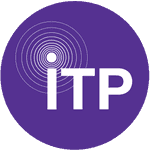Examples
Getting started
Download and open the 'Processing' application. Select something from the Examples. Hit the Run button. Lather, rinse, repeat as necessary. More information on using Processing itself is can be found in the environment section of the reference. To learn the Processing language, we recommend you try a few of the built-in examples, and check out the reference. A group of diverse books have been written to help people with different goals and skill levels.
Getting Started Tutorial
Don’t know where to get started? Read this tutorial, which will guide you through the basics of Processing
Read tutorialGet the software
The Processing Development Environment makes it easy to write Processing programs. It’s free and open source!
Download ProcessingJoin our Discord!
We're excited to announce the launch of the official Processing Discord server, a new space for our community to connect, share, and collaborate in real time.
Whether you're a beginner or an expert, join us to ask questions, get help, and meet fellow creative coders from around the world.
Contribute
The core Processing software is augmented by libraries and tools contributed through the community. These inventive extensions are a bright future for the project. We have a list of Contributed Libraries and Contributed Tools posted online. These contributions can't be underestimated.
To contribute to Processing development, please visit Processing on GitHub to read instructions for downloading the code, building from the source, reporting and tracking bugs, creating libraries and tools.
